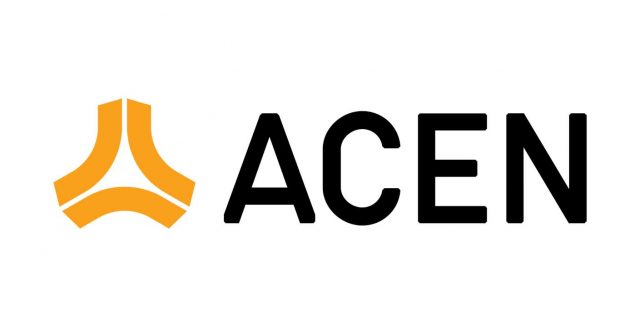(Part 2)
If there’s any takeaway from the series of financial crises in the last 25 years, it is not that strong regulation produces strong banks. Strong regulation by itself will be useless unless we have straight banking regulators who will enforce the Basel accords among the banks following their own strong corporate governance. Market discipline also remains a necessary pillar for overall financial stability.
Credit Suisse is not exactly an innocent bystander who happened to be in the wrong place at the wrong time. True, the collapse of Silicon Valley Bank and Signature Bank in close succession sent jitters through the financial markets, regulators and investors alike. It’s not puzzling but Credit Suisse was a natural market concern because, one, it experienced an earlier funding problem that required it to solicit investment from the Middle East and Scandinavia; and, two, it had a series of serious mismanagement problems under its belt. Credit Suisse became synonymous with “risky.”
Thus, in October 2022, when a journalist tweeted that a major investment bank was “on the brink,” there was no other bank that fit the bill except Credit Suisse. Immediately, the investment bank bled from deposit withdrawal of as much as SFr 100 billion, pushing share prices down. In need of quick liquidity, Credit Suisse tried but failed to convince its biggest shareholder, Saudi Arabia’s Saudi National Bank (SNB), to top up its initial $1.5-billion investment made in 2022 for a 10% stake. Instead of helping calm the markets, its chairman, Ammar Al Khudairi, issued a pointed denial of SNB’s potential support: “absolutely not, for many reasons outside the simplest reason, which is regulatory and statutory.”
This quip spread rapidly through social media and the capital markets, and it was enough to cause an exodus of deposits and a collapse in its share prices. Investors began to panic. Credit Suisse’s credit default swap (CDS) spread literally spiked, so Switzerland’s central bank, the Swiss National Bank, had to come in and infuse it with additional liquidity.
Although SNB had already clarified last year that it had no plans of increasing its exposure to Credit Suisse, CNBC later reported that the Chairman’s remark literally amounted to shooting itself in the foot because as the biggest shareholder, it was also the biggest loser when Credit Suisse’s share prices suddenly plummeted. Other shareholders include the Qatar Investment Authority and Norway’s sovereign wealth fund, Norges Bank Investment Management.
The Swiss National Bank at first thought that SFr 50 billion in financial assistance as a “liquidity backstop” could do the trick. Against collateral, Credit Suisse could draw from the facility any time as necessary. The central bank hoped against hope that such a demonstration of liquidity could reassure investors that their money was safe, and that speculation was not warranted.
Through these episodes, some quarters were in a quandary as to why the Swiss National Bank, the Swiss Financial Market Supervisory Authority (FINMA), and the Swiss Federal Department of Finance opted to merge Credit Suisse with UBS, the largest bank in Switzerland. The UK Economic and Social Research Council’s Economic Observatory argued in April 2023 that four options were actually available for Credit Suisse.
First is to declare insolvency and permit Credit Suisse to close through the operation of banking law. But this is a long and winding process which is not appropriate for big, interconnected banks like Credit Suisse. There could be more negative consequences of global proportion.
Second is through bank resolution. This would involve the regulators’ direct intervention by bailing in creditors, restructuring the bank over the weekend in a bid to minimize disruption in retail banking and other financial services. This could have been speedier, and less disruptive. Whether this could have preserved the bank’s 167-year legacy is an open question given its basic weaknesses. In the first place, it should have in place a restructuring program in case it needed resolution but it was reported that the program was half complete when the shock hit Zurich.
Third is to nationalize Credit Suisse. This was ruled out because a similar rescue program was done in favor of UBS itself. More and bigger use of public money was less acceptable to Switzerland’s civil society.
Finally, merge Credit Suisse with UBS. What is strange is that as early as March 15 before the bank was formally folded in with UBS with the liquidity backstop, the merger was already mandated, allowing Credit Suisse to continue its regular operation with restructuring. Its Additional Tier 1 (AT1) Capital, that which is derived from the issuance of Tier 1 Capital Notes, aggregating SFr 16 billion will be written down to zero. In effect, the capital position of UBS will not weaken from the merger, but instead will be strengthened.
It took over Credit Suisse for $3.2 billion even as last year’s valuation put it at around $22.8 billion or at the time of the takeover, about $8.4 billion. Shareholders of Credit Suisse were paid only one single UBS share for every 22.48 shares they held. UBS was the clear winner.
In addition, UBS was also granted access to additional SFr 100 billion from the central bank. With government guarantee for losses of up to SFr 9 billion after UBS’s guarantee of the first SFr 5 billion, the solution is not quite a commercial solution. Public money was still involved and possibly, at risk.
Hindsight makes the case against Credit Suisse an obvious one.
London’s The Guardian in February last year ran an interesting article about what it called “Credit Suisse scandals.” There was a string of controversies involving the second largest Swiss bank.
This is bad corporate governance, plain and simple: from as early as 1986, the bank was already involved with some dictatorships’ deposit of ill-gotten wealth and on to destroying evidence of some companies in Japan trying to conceal their losses from their shareholders and the public.
In the subsequent years, Credit Suisse was involved in accepting deposits linked to government corruption, helping money launderers, inflating the price of sub-prime bonds during the Global Financial Crisis, and helping some parties evade taxes. More cases were filed against the bank for fraud, offering jobs to families of its potential clients, corporate espionage and drug trafficking.
And of course, Credit Suisse’s biggest scandal was its loss of $5.5 billion due to its risky exposure to the US hedge fund Archegos Capital Management as well as UK’s finance firm Greensill Capital. They collapsed in 2021 as an obvious testament to the bank’s failure in basic risk management. After the fact, Credit Suisse promised to put risk management “at the heart” of its decision-making.
Thus, there is a deeper, more fundamental problem in Credit Suisse. No less than FINMA chair Marlene Amstad could have summed it up better. The bank suffers from a “cultural problem that translated into a lack of accountability.” Cultural it is, because the slide into ignominy did not start with the banking stress in the US this year, it actually started long before, gaining momentum in the aftermath of the Global Financial Crisis. Credit Suisse was actively involved in the proliferation of the sub-prime business.
Credit Suisse is no less than a cautionary tale when strong regulations are treated shabbily. The GFC made it imperative to toughen the regulation of large, interconnected banks like Credit Suisse. But the bank was rather half-hearted in its compliance. Higher capital buffers bought some time for Credit Suisse in October 2022 but not enough to permit the Swiss regulators to package a less disorderly outcome.
Funding costs for the banks may have to increase due to the bail-in of Credit Suisse’s AT1 bonds. This instrument is meant to enhance the bank’s loss-absorbing capacity when written down to zero, as the regulators permitted it. This was not expected by investors who thought a write down would not occur “before shareholders were completely wiped out.” This means AT1 bond holders may suffer losses before equity holders even as the coupons paid on the bonds exceeded the bank’s representation to their clients. With the decision of the regulators to merge, rather than resolve the Credit Suisse problems, it now becomes necessary for other regulators to reflect on the role and use of AT1 instruments in establishing the capital position of the banks.
This could have long-term impact on fund-raising cost by the banks.
There is no dispute that Basel III accords on capital, leverage and liquidity are financial-crisis preventing measures. But it is incumbent upon the regulators to choose the best option on how to mitigate brewing challenges to bank’s financial condition, and enforce the strategy right away to its logical end. But the story of Credit Suisse also compels us to think about further exploring resolution strategies that are better able to help stabilize a bank’s liquidity position.
Credit Suisse failed in many respects in regulatory compliance and upholding good corporate governance as shown by the string of scandals it was involved in. As risks continue to increase banks’ vulnerabilities, it’s not smart to be less diligent in assessing risks related to funding costs, interest rate sensitivity and credit risks. Even in the Philippines, the slow but definitive uptrend in indebtedness, hidden leverage and liquidity mismatches in the non-bank sector should always raise some red flags from both the Bangko Sentral ng Pilipinas and the market players themselves.
Lack of vigilance especially on the banks’ capital positions, risk management and governance demystified the much-vaunted Swiss banking reputation. When even Swiss banks fail, nothing else should surprise us anymore in the emerging markets.
Diwa C. Guinigundo is the former deputy governor for the Monetary and Economics Sector, the Bangko Sentral ng Pilipinas (BSP). He served the BSP for 41 years. In 2001-2003, he was alternate executive director at the International Monetary Fund in Washington, DC. He is the senior pastor of the Fullness of Christ International Ministries in Mandaluyong.















